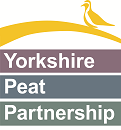
©Danny Green/2020VISION

©Danny Green/2020VISION

©Danny Green/2020VISION
Norfolk hawker
The rare Norfolk hawker is a pale brown dragonfly, with a distinctive yellow triangle on its body. Until recently, it was only found in unpolluted fens, marshes and ditches of the Broads National Park in Norfolk and Suffolk, although its range has started to expand.
Scientific name
Anaciaeschna isocelesWhen to see
June to JulySpecies information
Category
Statistics
Length: 6.7cmProtected in the UK under the Wildlife and Countryside Act, 1981. Priority Species under the UK Post-2010 Biodiversity Framework.
